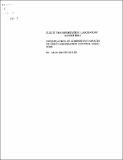| dc.description.abstract | The Passenger Origin / Destination Simulator (PODS) was used to investigate the competitive impacts of Origin-Destination control airline Revenue Management (RM) methods. Experiments performed included revenue performance of O-D control RM methods versus EMSRb fare class control, impacts of passenger choice assumptions, competing airlines with co-located hub vs. separate hubs, and different implementations of the most promising R1M methods. First, the revenue results from several O-D control RM methods are compared to the revenue result from EMSRb fare class control. Of the four O-D methods investigated, Displacement Adjusted Virtual Nesting (DAVN) performed consistently the best, followed closely by Heuristic Bid-Price (HBP). Greedy Virtual Nesting (GVN) was the third best performer, with decreasing performance as demand increased. Network Bid- Price (Netbid) performed the worst because of the "small network effect", and due to its sensitivity to forecasting and detruncation methods. Next, the impacts of passenger choice assumptions were investigated. We found that with the inclusion of demand correlation and passenger choice in the simulations, DAVN and HBP performed better, while Netbid performed worse. The result for GVN was inconsistent. Under the new PODS maximum willingness-to-pay formulation with lower levels of sell-up, we saw lower passenger loads with more spill. We also noticed lower absolute revenue, as well as bigger revenue impact from O-D methods. For competing airlines with co-located hub vs. separate hubs, most RM methods performed better under the co-located hub scenario tested because the airlines have to compete for both local and connecting passengers, making passenger selection more critical. As to O-D methods used by airlines competing head to head, under HBP and GVN, the co-located hub network leads to more sell-up, leading to better revenue performance. Finally, different implementations of HBP and DAVN were investigated. For HBP, we found that the d-factor had a large effect on performance. For DAVN implementations, we noticed that different virtual class boundary methods had a large impact on performance, while frequent re-optimization might actually reduce performance. | en_US |
